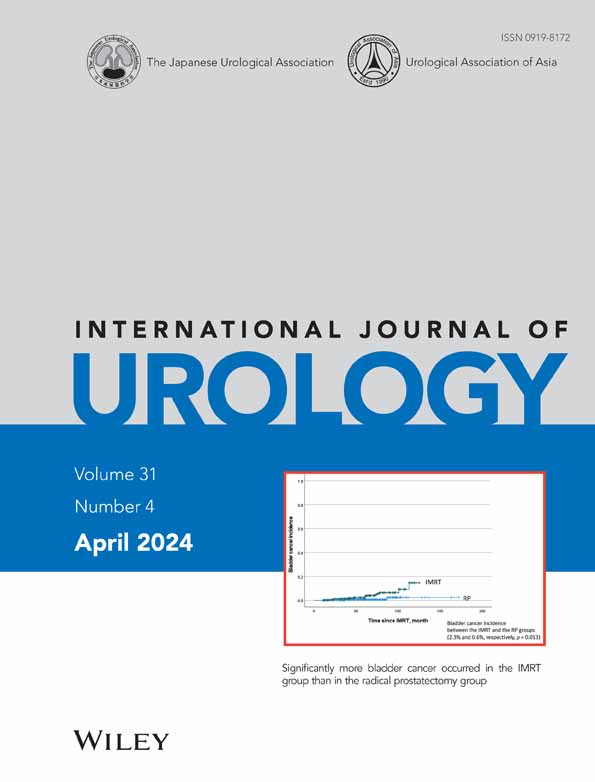Real world evidence of enfortumab vedotin in patients with advanced urothelial cancer: A multicenter observational study
Abstract
Objectives
To explore the characteristics of patients and assess the effectiveness of enfortumab vedotin (EV) in those with treatment-resistant advanced urothelial cancer in a real-world setting.
Patients and Methods
A multicenter observational study was conducted on 103 evaluable patients with advanced urothelial cancer who received EV. Outcomes were assessed by radiographic response, progression-free survival (PFS), and overall survival (OS), with treatment-related adverse events (trAEs). Radiographic response was assessed using Response Evaluation Criteria in Solid Tumors version 1.1, while trAEs were studied in line with Common Terminology Criteria for Adverse Events version 5.0.
Results
The median follow-up was 8.9 months (range, 0.1–16.4). The observed objective response rate was 50.5%. The median PFS was 6.0 months (95% CI: 4.7–9.8), and the median OS was 14.5 months (95% CI: 12.4–not reached). Out of the 103 patients, 19 (18.4%) had an Eastern Cooperative Oncology Group performance status of 2 or more, 14 (14.7%) had an non-urothelial carcinoma histology, and 40 (38.3%) had at least one pre-existing comorbidity. There were 26 (25.2%) patients who reported 49 trAEs, with 9 (18.3%) being grade 3 or higher. The most common trAEs included rash, occurring in 18.4%.
Conclusions
This study describes the characteristics and outcomes of patients with previously treated advanced urothelial cancer receiving EV. The findings demonstrate that EV showed robust anti-tumor activity and had manageable safety profiles outside the clinical trial setting.
CONFLICT OF INTEREST STATEMENT
Wataru Fukuokaya certifies that all conflicts of interest, including specific financial interests and relationships and affiliations relevant to the subject matter or materials discussed in the manuscript (e.g., employment/affiliation, grants or funding, consultancies, honoraria, stock ownership or options, expert testimony, royalties, or patents filed, received, or pending), are the following: Takahiro Kimura, Hirotsugu Uemura, and Kazutoshi Fujita have received speaker honoraria from Astellas. Takahiro Kimura has received speaker honoraria from Janssen, AstraZeneca, Bayer, and Sanofi. The remaining authors have nothing to disclose.
Open Research
DATA AVAILABILITY STATEMENT
Our research data are available upon reasonable request.




